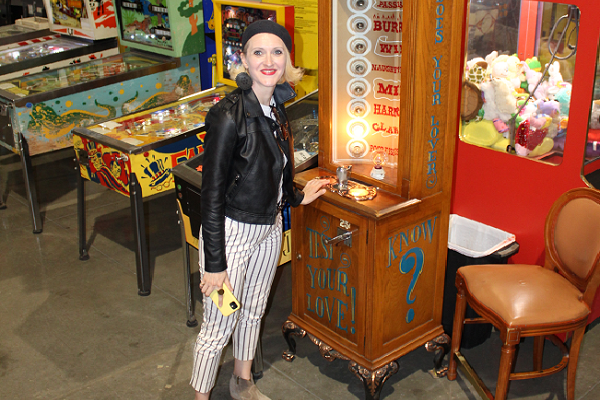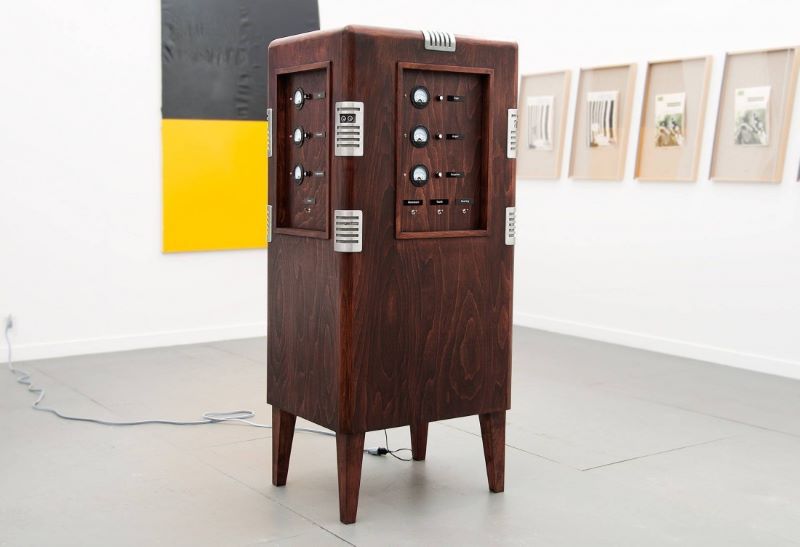Each of 50 Weeks in the City of Science features a text about selected research in a given subject area carried out by scientists from the universities forming the Academic Consortium – Katowice City of Science. The texts we publish give insight into the diversity of issues scientists deal with and show the research potential that is dormant in the universities of the consortium.
| Agnieszka Kliks-Pudlik |
The European City of Science Katowice 2024 is holding its Love Week in the week surrounding Valentine’s Day. The topic of love is not foreign to scientists from the universities that make up the Academic Consortium – Katowice City of Science, who deal with, among other things, the history of machines for estimating the romantic compatibility of couples and the disease of the broken heart.
The curator of the Love Week is Anna Malinowska, PhD, Associate Professor from the Faculty of Humanities of the University of Silesia in Katowice. The researcher of love studies argues that in matters of love, human dependence on machines is much older than it seems.
Ania Malinowska, PhD, Associate Professor by the love tester | private archive
‘We usually associate the relationship between technology and love with the emergence of internet communities and digital culture, thinking, for example, of dating apps. However, their origins can be traced back to the dawn of the 20th century, when the first automated machines appeared to determine a couple’s similarity based on shared personality traits’, says the scientist who specialises in researching the semiotics of love in the context of cohabitation between humans and smart machines.
She is referring to ‘love tester machines’, devices for estimating the romantic compatibility of couples, which were developed in a wave of technological developments for the entertainment industry and a fascination with psychological theories of personality. They were particularly popular in England, France, Japan, and the USA. They were the first personality tests for romantic relationships.
These machines (cabinet-like in appearance) were equipped with a simple rotary mechanism (and later a digital mechanism) and operated like a lottery machine, that is, a random selection from among certain options that were revealed when the mechanism (a button, a lever, or a coin lever) was activated. ‘This form of technological fortune telling based on cultural and psychological parameters has permeated online environments (such as dating websites) and is a continuation of the algorithmic approach to relationality’, points out Anna Malinowska.
According to the researcher, love testers are significant but so far unexplored technological objects and media underlying the contemporary algorithmisation of love relationships. Therefore, she has decided to explore this issue further in an ongoing project entitled ‘Love testers: Technological prototypes for the profiling of feelings, personality and relationships (a cultural study)’, funded by the National Science Centre under the OPUS call for proposals.
The project is in line with the tradition of media archaeology: a field of cultural studies that investigates forgotten technologies and their impact on contemporary social cultures. The research is innovative. Until now, no one has systematised these devices or described their cultural impact.
My research reveals thus far unknown connections between ancient pair compatibility testing devices and contemporary personal testing algorithms for romantic relationships. I show that the use of technology in love has been happening for a long time and, in my opinion, will continue to grow’, concludes Anna Malinowska.
Przemysław Jasielski’s Emotion Control Kit, which is on display during Love Week at the ‘Emotion Control Unit’ exhibition | https://jasielski.com/
A broken heart
The symbol of love is the heart – the domain of cardiology. It turns out that the stress accompanying separation from or the loss of a loved one translates into a broken heart disease.
This is takotsubo syndrome, a heart pathology that manifests itself as an acute condition that resembles a heart attack, with characteristic electrocardiographic imaging. During the acute phase of the disease, the ventricle of the heart takes on the appearance of a vessel with a narrow neck and a flattened bottom – hence the name of the syndrome, which means ‘octopus pot’ in Japanese – in this kind of shape.
Among others, cardiologists from the Silesian Medical University in Katowice are researching this syndrome. Within the framework of a grant awarded by the Polish Cardiac Society, Maciej Wybraniec, MD, DSc, an invasive cardiologist, conducted research into the clinical significance of various rare types of heart attacks occurring in young people. ‘It turns out that a large percentage of young people having a heart attack are in fact patients who do not suffer from atherosclerosis, and some of these cases are precisely the aforementioned stress-related cardiomyopathy, i.e. takotsubo’, emphasises the researcher.
According to his original work, takotsubo syndrome fits into the broader context of neurocardiogenic damage, a situation in which pathology in the brain or mind has a damaging effect on the heart muscle. ‘The feelings of accelerated heartbeat and anxiety that often occur in people with anxiety disorders are an example of how the central nervous system affects the heart through stimulation of the sympathetic nervous system’, explains Maciej Wybraniec.
The full programme of Love Week can be found on the event website.







